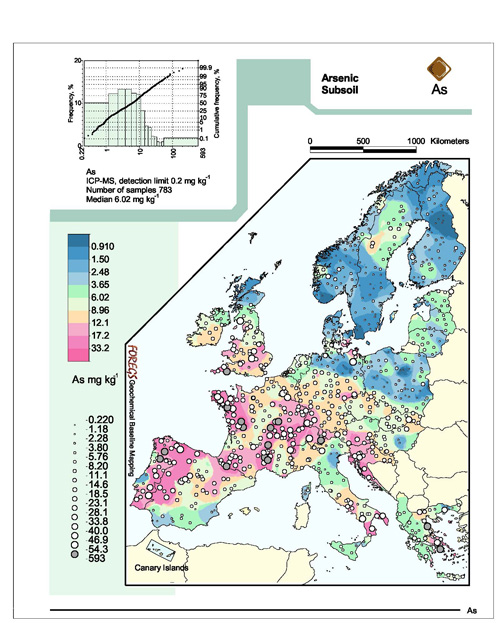Arsenic regions
The natural concentrations of arsenic and other potentially harmful elements in soil and bedrock vary between different parts of Finland. The Tampere–Häme region in southern Finland is characterized by elevated natural concentrations of arsenic in the most common soil parent material, glacial till. In some cases, arsenic concentrations are also elevated in bedrock, groundwater and even in humus. The same applies in other countries. Arsenic concentrations are often higher in central and southern Europe than in Fennoscandia.
Report: Method for delineating regions with high baseline concentration: Download pdf
Geochemical baselines in Europe: Geochemical Atlas of Europe

Distribution of arsenic in European subsoils. Source: Salminen, R. (ed.); Batista, M. J.; Bidovec, M.; Demetriades, A.; De Vivo, B.; De Vos, W.; Duris, M.; Gilucis, A.; Gregorauskiene, V.; Halamic, J.; Heitzmann, P.; Lima, A.; Jordan, G.; Klaver, G.; Klein, P.; Lis, J.; Locutura, J.; Marsina, K.; Mazreku, A.; O'Connor, P. J.; Olsson, S. Å.; Ottesen, R.-T.; Petersell, V.; Plant, J. A.; Reeder, S.; Salpeteur, I.; Sandström, H.; Siewers, U.; Steenfelt, A.; Tarvainen, T. 2005. Geochemical atlas of Europe. Part 1: Background information, methodology and maps. Espoo: Geological Survey of Finland. 525 p.




